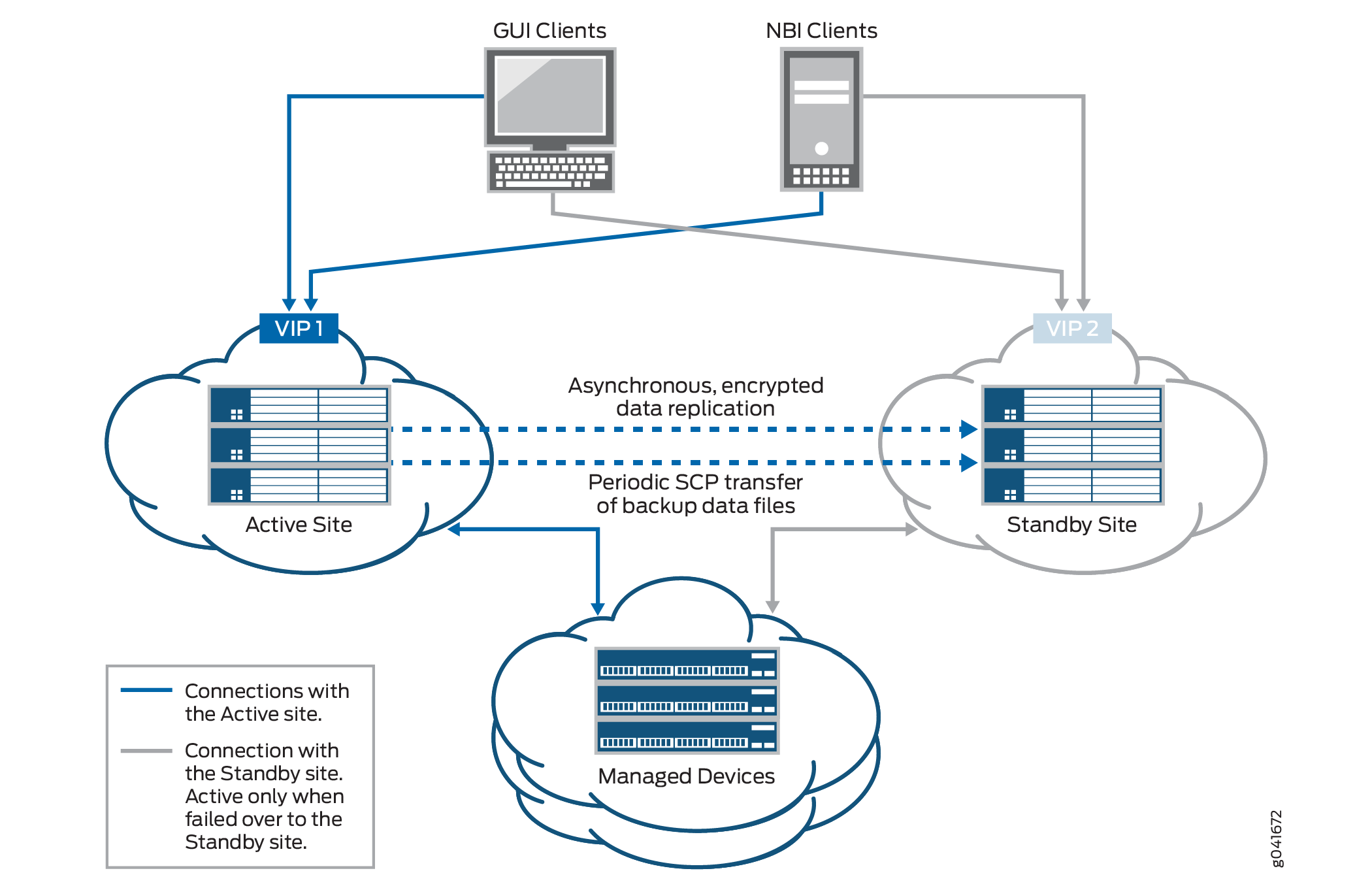Disaster Recovery Overview
A Junos Space cluster allows you to maintain high availability and scalability in your network management solution. However, because all nodes in a cluster need to be within the same subnet, they are typically deployed in the same data center or within the same campus. But you can easily recover a cluster from a disaster at a location by mirroring the original Junos Space installation on a cluster to another cluster at a geographically different location. So if the main Junos Space site fails due to a disaster such as an earthquake, the other site can take over. Hence, the physical installation of the disaster recovery setup is typically a set of two geographically separate clusters: the active or main site (that is, the local site) and the standby or backup site (that is, the remote site).
When the basic connectivity requirements and prerequisites are met (refer to Prerequisites to Configure Disaster Recovery and Connectivity Requirements to Configure Disaster Recovery ), data from the cluster at the active site is replicated to the cluster at the standby site in near realtime.
Figure 1 displays the disaster recovery solution.

Prerequisites to Configure Disaster Recovery
You need to ensure that your Junos Space installation meets the following prerequisites before you configure disaster recovery:
-
The Junos Space cluster at the primary or active site (which can be a single node or multiple nodes) and the cluster at the remote or standby site (which can be a single node or multiple nodes) must be set up in exactly the same way, with all the same applications, device adapters, same IP family configurations, and so on.
-
Both clusters should be configured with SMTP server information from the Junos Space user interface. For more information, see Managing SMTP Servers. This configuration enables the clusters at both the active site and the standby site to notify the administrator by e-mail if the replications fail.
The number of node(s) in active site and standby site should be the same.
Connectivity Requirements to Configure Disaster Recovery
You need to ensure that the disaster recovery solution meets the following connectivity requirements before you configure disaster recovery:
-
Layer 3 connectivity between the Junos Space clusters at the active and standby sites. This means:
-
Every node in a cluster can successfully ping the VIP address of the other cluster
-
Every node in a cluster can use SCP to transfer files between the active and standby sites
-
Database replication across the two clusters is possible through TCP ports 3306 (MySQL database replication) and 5432 (PostgreSQL database replication)
-
The bandwidth and latency of the connection between the two clusters are such that real-time database replication is successful. Although the exact bandwidth required depends on the amount of data transferred, we recommend a minimum of a 100-Mbps bandwidth connection with a latency of fewer than 150 milliseconds.
-
-
Independent Layer 3 connectivity between each cluster and managed devices
-
Independent Layer 3 connectivity between each cluster and GUI or NBI clients
To set up the disaster recovery process, see Manage Disaster Recovery.
